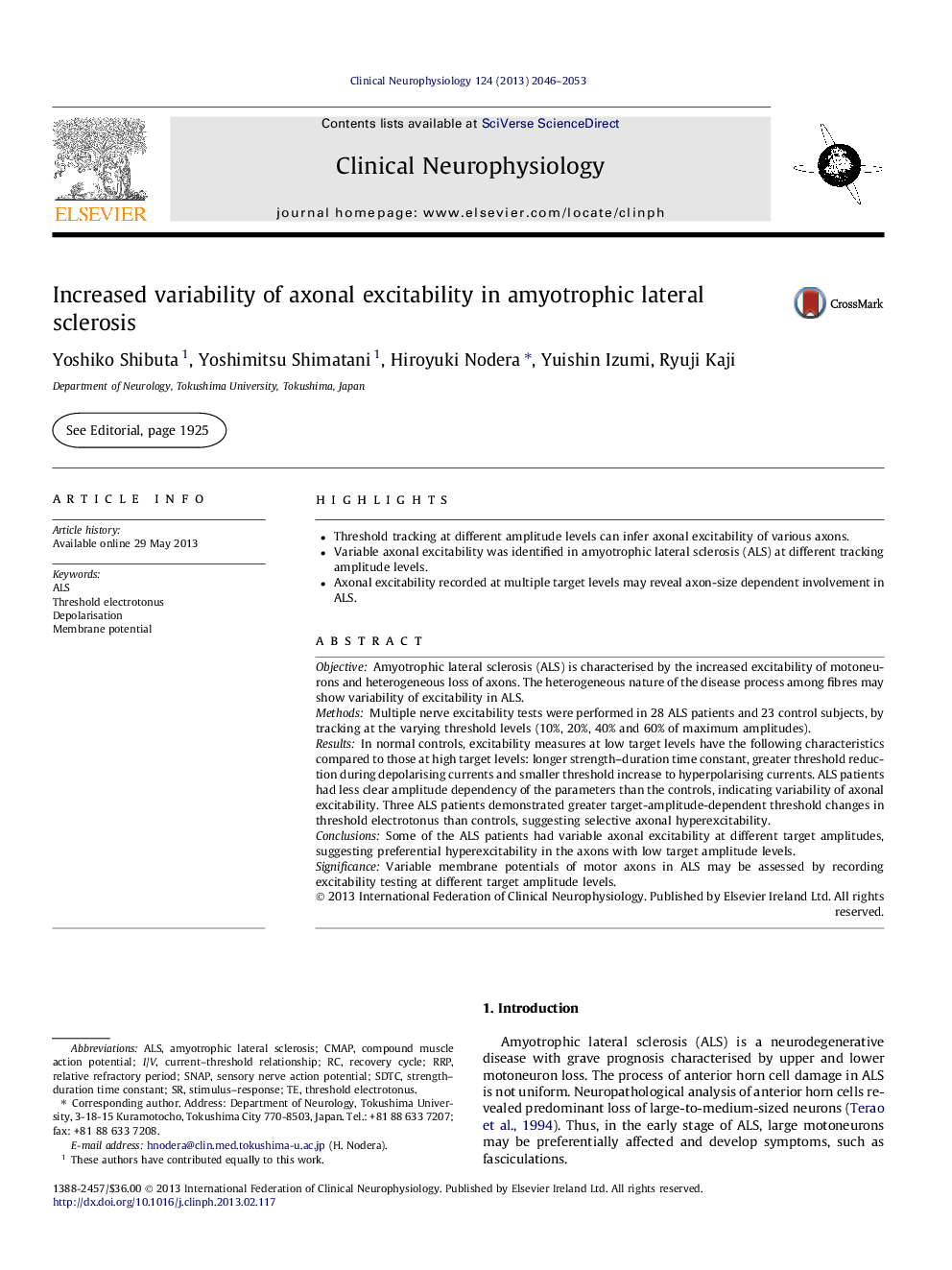| Article ID | Journal | Published Year | Pages | File Type |
|---|---|---|---|---|
| 3044683 | Clinical Neurophysiology | 2013 | 8 Pages |
•Threshold tracking at different amplitude levels can infer axonal excitability of various axons.•Variable axonal excitability was identified in amyotrophic lateral sclerosis (ALS)at different tracking amplitude levels.•Axonal excitability recorded at multiple target levels may reveal axon-size dependent involvement in ALS.
ObjectiveAmyotrophic lateral sclerosis (ALS) is characterised by the increased excitability of motoneurons and heterogeneous loss of axons. The heterogeneous nature of the disease process among fibres may show variability of excitability in ALS.MethodsMultiple nerve excitability tests were performed in 28 ALS patients and 23 control subjects, by tracking at the varying threshold levels (10%, 20%, 40% and 60% of maximum amplitudes).ResultsIn normal controls, excitability measures at low target levels have the following characteristics compared to those at high target levels: longer strength–duration time constant, greater threshold reduction during depolarising currents and smaller threshold increase to hyperpolarising currents. ALS patients had less clear amplitude dependency of the parameters than the controls, indicating variability of axonal excitability. Three ALS patients demonstrated greater target-amplitude-dependent threshold changes in threshold electrotonus than controls, suggesting selective axonal hyperexcitability.ConclusionsSome of the ALS patients had variable axonal excitability at different target amplitudes, suggesting preferential hyperexcitability in the axons with low target amplitude levels.SignificanceVariable membrane potentials of motor axons in ALS may be assessed by recording excitability testing at different target amplitude levels.
